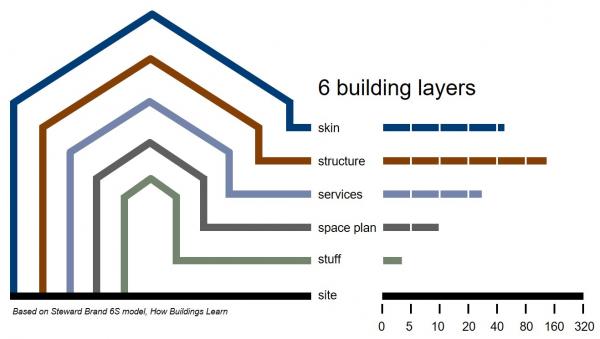What is a circular building?
A circular building is environmentally responsible through smart design and resource-efficiency. Every building life cycle begins at the design stage. In a circular building, this requires particular attention.
A circular building is environmentally responsible through smart design and resource-efficiency. Every building life cycle begins at the design stage. In a circular building, this requires particular attention, not only taking into account the effective use of space and efficient energy consumption during the use phase of the building, but also considering the further phases in the life cycle including alteration, demolition and urban mining.
There are three main principles to achieve this. A circular building must be change oriented. As the needs and wishes of users change, we need to create buildings that support changes efficiently. Of course, it must also be circular. Materials must be able to be reused and recycled as much as possible, with the highest possible value retention. Waste and material loss should be minimized. Thirdly, an inventory of all used building materials is desirable. This inventory provides an increased certainty to reuse and maintain the materials in a high-quality (and safe) way, e.g. for urban mining.
What is a circular building product?
Circular building products are the building blocks of a circular building. They are designed with circularity in mind. They use high-quality materials with long lifespans. This however isn’t the only criteria.
Circular building products are the building blocks of a circular building. They are designed with circularity in mind. They use high-quality materials with long lifespans. This however isn’t the only criteria. The materials must be chosen with safe use in mind, not only for the first life cycle, but for each consecutive life cycle. Recyclability and environmental impact also play a crucial role in the selection of the right materials. But it doesn’t stop there. A circular building product isn’t simply a summation of good materials. The design of these products must also be carefully considered. Circular design requires the ability to reuse or disassemble products. Disassembly is only possible when materials are connected to each other in a reversible manner. The disassembly must be clean so that no residues remain which can contaminate and degrade the material when recycled.
Circular building products have to potential to radically innovate the construction process. They require specific building connections and construction methods, transforming the traditional linear construction process into a circular one.
Why a circular building fits into a circular economy?
In a circular economy, products, components and materials retain their maximum value and functionality. Circular building products can make an important contribution.
Products are designed for long(er) use and reuse. They are well maintained and repaired, have a high second-hand value, can be expanded or upgraded, and can easily be taken apart and turned into new products. This way, product lives are extended and material cycles are closed, minimizing the need for new materials and energy. This creates enormous opportunities for the construction sector. In fact, circular construction is the future of the construction industry in all its facets.

